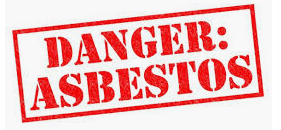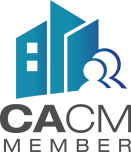Knowing how often to inspect your sewer lines can save you time and money by spotting problems early.
Sewer lines should generally be checked every one to three years, but if your pipes are old or you notice trouble, yearly inspections are best.
Regular checks help prevent costly backups and damage to your home or business.
If you’ve just moved into a new place or your home has aging pipes, it makes sense to keep a closer eye on your sewer system.
At Splash Plumbing, we recommend scheduling sewer line inspections based on the age of your plumbing and how often you use your drains.
A simple camera inspection can quickly find issues before they turn into major repairs.
Taking care of your sewer line is an important part of home maintenance.
Whether you are in Anaheim or anywhere in Orange County, Splash Plumbing is ready to help you keep your sewer lines in good shape with expert inspections and quick service.
Why Sewer Line Inspections Matter
Keeping your sewer lines in good shape helps you avoid costly repairs and keeps your home safe.
Regular checks catch problems early and protect your property value.
Knowing what can happen when you skip maintenance and what benefits come with inspections can help you stay ahead.
Potential Risks of Neglecting Sewer Line Maintenance
If you ignore your sewer lines, you risk blockages that cause backups and overflows.
These can lead to water damage, bad odors, and even health problems from raw sewage.
Cracks or breaks may let tree roots grow inside the pipes, worsening damage.
Neglect can also cause foundation issues or yard sinkholes.
Repairs after serious damage are often expensive and disruptive.
To prevent this, schedule inspections every 3-5 years, or more often if you see problems.
Benefits of Regular Inspections
Regular inspections spot small issues before they become big headaches.
Using cameras, plumbers can check pipes without digging.
This saves you time and money by fixing clogs or corrosion early.
Inspections also improve your sewer’s flow and prevent blockages.
You get peace of mind knowing your plumbing system works well.
A good routine is every 5-10 years, or sooner if you notice slow drains or frequent clogs.
Impact on Home Value and Safety
Well-maintained sewer lines add value to your home.
Buyers prefer properties with a clear history of plumbing care since it signals fewer future problems.
If your lines aren’t inspected regularly, hidden damage can scare off buyers or lower your price.
Safety is also key.
Damaged sewer lines can expose your family to harmful bacteria and nasty smells.
Plus, leaks underground might weaken your home’s foundation, making it unsafe.
Recommended Frequency for Sewer Line Inspections
Knowing when to inspect your sewer line can save you from expensive repairs and prevent major plumbing problems.
Your inspection schedule depends on common practices, home factors, and the pipe system’s age.
General Inspection Guidelines
Most homes should have their sewer lines inspected every 2 to 3 years.
This routine helps spot small issues before they turn into costly damage.
If you notice slow drains, bad smells, or frequent clogs, you might need an inspection sooner.
Video camera inspections are a smart choice because they show what’s really going on inside the pipes.
Regular checks help maintain the system’s health and extend its lifespan.
Splash Plumbing recommends setting reminders to inspect your sewer line regularly so you don’t forget this important step in home care.
Factors Influencing Inspection Intervals
Some things affect how often your sewer line should be checked.
If your property is near lots of trees, roots might grow into pipes and cause blockages.
Heavy usage, like in large families or commercial buildings, can wear pipes faster.
Previous plumbing issues also mean you should inspect yearly.
Materials of the pipes matter too — some pipes break or corrode faster, needing closer attention.
Here’s a quick list to decide:
- Trees nearby? Inspect every 1-2 years
- History of clogs? Inspect yearly
- Heavy water use? Inspect every 1-2 years
- Good condition, no problems? Every 2-3 years
Differences for Older Versus Newer Homes
Older homes often have pipes made from materials like clay or cast iron, which can crack or corrode over time.
These homes need inspections more often, usually every year or every 18 months, to catch early damage.
Newer homes with modern plumbing often have PVC or other durable materials.
These systems usually hold up better and can go 2 to 3 years between inspections unless something unusual happens.
If your home is older, or you’ve had repairs before, Splash Plumbing can help set a schedule that fits your needs and keeps your system working right.
Warning Signs That Indicate Immediate Inspection
If you notice strange smells, slow drains, or strange yard conditions around your home, these could be signs your sewer line needs urgent attention.
Acting quickly can help you avoid bigger problems and costly repairs.
Unusual Odors
You might smell foul odors coming from your drains, toilets, or even outside near your home.
This smell usually means sewer gas is leaking from a broken or blocked pipe.
If the odor is strong and does not go away, it’s a sign that your sewer line could be damaged or clogged.
Sewer gas contains harmful bacteria, so it’s important to get your plumbing checked soon.
Splash Plumbing often finds that bad smells come before other visible problems.
Don’t ignore persistent odors—they usually mean it’s time to inspect your pipes.
Slow Drains and Frequent Backups
If your sinks, toilets, or showers are draining slowly, or if you have frequent backups, your sewer line might be clogged or damaged.
When multiple drains are slow at the same time, it usually means the problem is in the main sewer line, not just a single pipe.
Frequent backups can cause water damage and are a clear sign you need a sewer inspection.
Gurgling sounds from your drains or toilets mean air is trapped in the pipes, another sign of a blockage.
Catching these problems early can save you from major repairs.
Lush Patches in the Yard
If you notice areas in your yard that suddenly have extra green, soggy grass, it could mean a sewer leak underground.
The water and waste escaping from broken pipes create a wet area where plants grow faster.
Standing water or soggy soil near your house could also signal a leak in your sewer line.
If you spot these signs, call a plumber to inspect your sewer system before the problem gets worse.
Splash Plumbing recommends regular checks to catch leaks early, especially if you see unusual yard growth combined with other warning signs.
Methods Used for Sewer Line Inspections
Sewer line inspections use special tools to find problems like cracks, blockages, or roots inside your pipes.
Two common ways to check your sewer line are video camera inspections and traditional diagnostic methods.
Each has its own benefits to help keep your plumbing in good shape.
Video Camera Inspection
Video camera inspection is one of the best ways to see inside your sewer pipes.
A small waterproof camera is sent through the pipes on a flexible cable.
It shows real-time video of the inside, so the plumber can spot issues like cracks, blockages, tree root intrusion, or pipe misalignments.
This method helps catch small problems early before they cause major damage.
Video inspections are quick and less invasive.
The clear images also help you understand what repairs might be needed.
If you’re near Anaheim, CA, Splash Plumbing uses high-quality cameras to make sure your sewer lines stay healthy.
Traditional Diagnostic Techniques
Traditional techniques include things like smoke testing, dye tests, and acoustic sound detection.
Smoke testing involves sending harmless smoke into the sewer line to find leaks or bad connections.
If smoke appears in places it shouldn’t, there’s likely a problem.
Dye tests use colored water to track flow and spot leaks.
Acoustic methods listen for unusual sounds like water escaping or blockages.
These tests can help pinpoint issues when video isn’t enough or to confirm the problem’s location.
While not as detailed as camera inspections, traditional methods are still useful for understanding your sewer line’s condition.
Professional Versus DIY Sewer Line Inspection
You might wonder if you can inspect your sewer line yourself or if you should hire a pro.
While DIY methods can help spot some visible problems, they often miss hidden issues inside your pipes.
Professional inspections use special sewer cameras that show the inside of your pipes.
This helps catch small cracks, clogs, or tree root intrusions early.
Pros also know what signs to look for and how to fix problems before they get worse.
Here’s a quick comparison:
| Aspect | DIY Inspection | Professional Inspection |
|---|---|---|
| Tools | Basic tools, limited visibility | Sewer cameras, advanced tools |
| Accuracy | Can miss hidden damage | More accurate, finds all issues |
| Skill level needed | Low to medium | High |
| Cost | Low upfront, possible high risk | Higher upfront, saves money long-term |
| Time | Depends on your skill | Usually faster and thorough |
If you live in Orange County or nearby Anaheim, Splash Plumbing can help.
Their experts inspect your sewer line carefully, making sure everything is working well.
This service can give you peace of mind and help avoid expensive repairs later.
Consider regular checks every 1 to 2 years to keep your plumbing safe and running smoothly.
How to Prepare for a Sewer Line Inspection
Before the inspection, clear the area around your sewer cleanout or access point.
Make sure there is easy access for the plumber and their equipment.
Remove dirt, plants, or debris that might block the way.
Check for any signs of slow drains or foul odors around your home.
Writing down when and where you notice these can help the plumber find the problem faster.
Turn off irrigation systems near your sewer line.
Water from sprinklers can interfere with the inspection.
Have a list of any past sewer problems ready.
This information helps the plumber understand your system’s history and focus on common trouble spots.
During the inspection, a plumber uses a small camera to look inside the pipes.
It helps find cracks, blockages, or root intrusion.
If you live in an older home or have trees near your sewer line, you may need inspections more often.
You can call Splash Plumbing for advice on how often to check your lines.
Make sure pets and children are kept away from the work area.
This keeps everyone safe and allows the plumber to work quickly.
By preparing ahead, your sewer line inspection will be easier and more effective.
Splash Plumbing is here to help with reliable service near Anaheim, CA whenever you need it.
Finding a Reliable Sewer Inspection Service
Choosing the right sewer inspection service can save you time and money.
You want a team that is experienced, trustworthy, and transparent.
Knowing what to check for and which questions to ask will help you find the best fit for your home.
What to Look for in a Service Provider
Look for a company with experience in sewer inspections.
They should use modern tools like video cameras to see inside your pipes.
This helps find problems early before they get worse.
Check if the provider is licensed and insured.
This protects you if anything goes wrong during the inspection.
Also, read reviews or ask neighbors about their experiences.
Choose a service that explains the inspection process clearly.
They should share findings with you and show video or photos.
A good company, like Splash Plumbing, offers quick response times and cares about your needs.
Questions to Ask Before Hiring
Ask how long the company has been inspecting sewer lines. Experience matters when spotting hidden issues.
Find out what kind of equipment they use. High-quality video cameras and hydro jetting tools are a plus.
Request pricing details upfront. Will you pay a flat fee or based on the work needed?
Make sure there are no hidden fees. Finally, ask how soon they can schedule your inspection.
A company that can respond quickly helps prevent bigger problems down the line. Also, check if they offer repair services if issues are found.
Tips for Maintaining Healthy Sewer Lines
Keeping your sewer lines in good shape means fewer problems and less need for frequent inspections. Simple steps in how you use your plumbing and what you flush can make a big difference in keeping your pipes clear and working well.
Preventive Measures to Reduce Inspection Needs
Regular cleaning helps avoid buildup that can cause clogs. For most homes, scheduling a sewer line cleaning every 1-2 years is a good rule of thumb.
Older homes or those near tree roots might need cleaning every 2-3 years. Watch out for tree roots growing near your sewer lines—they can crack pipes and cause blockages.
Installing root barriers or trimming roots can help protect your pipes. Fix leaks and drips quickly.
Even small leaks can damage pipes over time, leading to bigger problems. Proper pipe maintenance, like checking for cracks or corrosion, can also keep your sewer system healthy.
Safe Disposal Practices
What you put down your drains matters a lot. Avoid flushing anything besides toilet paper and human waste.
Items like wipes, paper towels, grease, or cooking oils can clog pipes quickly. Use a drain strainer to catch hair and food scraps.
This stops these things from going down pipes and causing blockages. Never pour chemicals or harsh cleaners down the drain.
These can damage pipes and disrupt the flow in your system. Instead, use natural or plumber-approved cleaning products.
Cost Considerations for Sewer Line Inspections
Knowing how much a sewer line inspection might cost and what affects those costs can help you plan your home maintenance budget well. Prices can vary based on several key factors, so understanding these will help you avoid surprises.
Typical Price Ranges
Sewer line inspections usually cost between $100 and $300. The variation depends on the complexity of the job and where you live.
Simple, easy-to-access lines often fall on the lower end of the range. Longer or more complicated sewer lines take more time and can push costs towards the higher end.
If issues like blockages or damages appear, the cost may increase because of the extra work involved.
Factors Affecting Inspection Costs
Several things change how much you’ll pay for a sewer inspection. Length of the sewer line: Longer pipes take more time to inspect.
Age of your home: Older homes might have more risks, requiring detailed checks. Tree roots near pipes: Roots can cause blockages, needing special attention.
Pipe condition: If there are cracks or clogs, the inspection will take longer. Location: Costs differ by region because of labor and equipment prices.
Frequently Asked Questions
Knowing when to inspect your sewer line and what to watch for can save you time and money. You’ll also want an idea about costs, maintenance benefits, and what to do if problems come up.
What’s a good interval for inspecting my main sewer line?
You should inspect your main sewer line every 1 to 2 years, especially if your home is older than 20 years or if you have trees nearby. A regular check helps catch problems early before they get worse.
Can you suggest the average lifespan of sewer lines?
Sewer lines usually last between 50 and 100 years. The exact lifespan depends on the pipe material, how well it’s maintained, and local soil conditions.
What are typical signs that indicate the need for a sewer line inspection?
Look for foul odors near drains or your yard, slow draining sinks or tubs, frequent clogs, and backups. These signs often mean there are clogs, leaks, or root invasions.
How much should I budget for a professional sewer line cleaning?
Professional sewer line cleaning generally costs between $200 and $500. Prices vary depending on the cleaning method and how severe the blockage is.
Is there a benefit to regular sewer line maintenance?
Yes. Regular maintenance helps prevent major clogs and expensive repairs.
What do I do if I suspect a clog in my main sewer line?
If you suspect a clog, avoid using harsh chemicals.
Call a professional plumber like Splash Plumbing right away. They can diagnose and fix the problem safely using the right tools.












